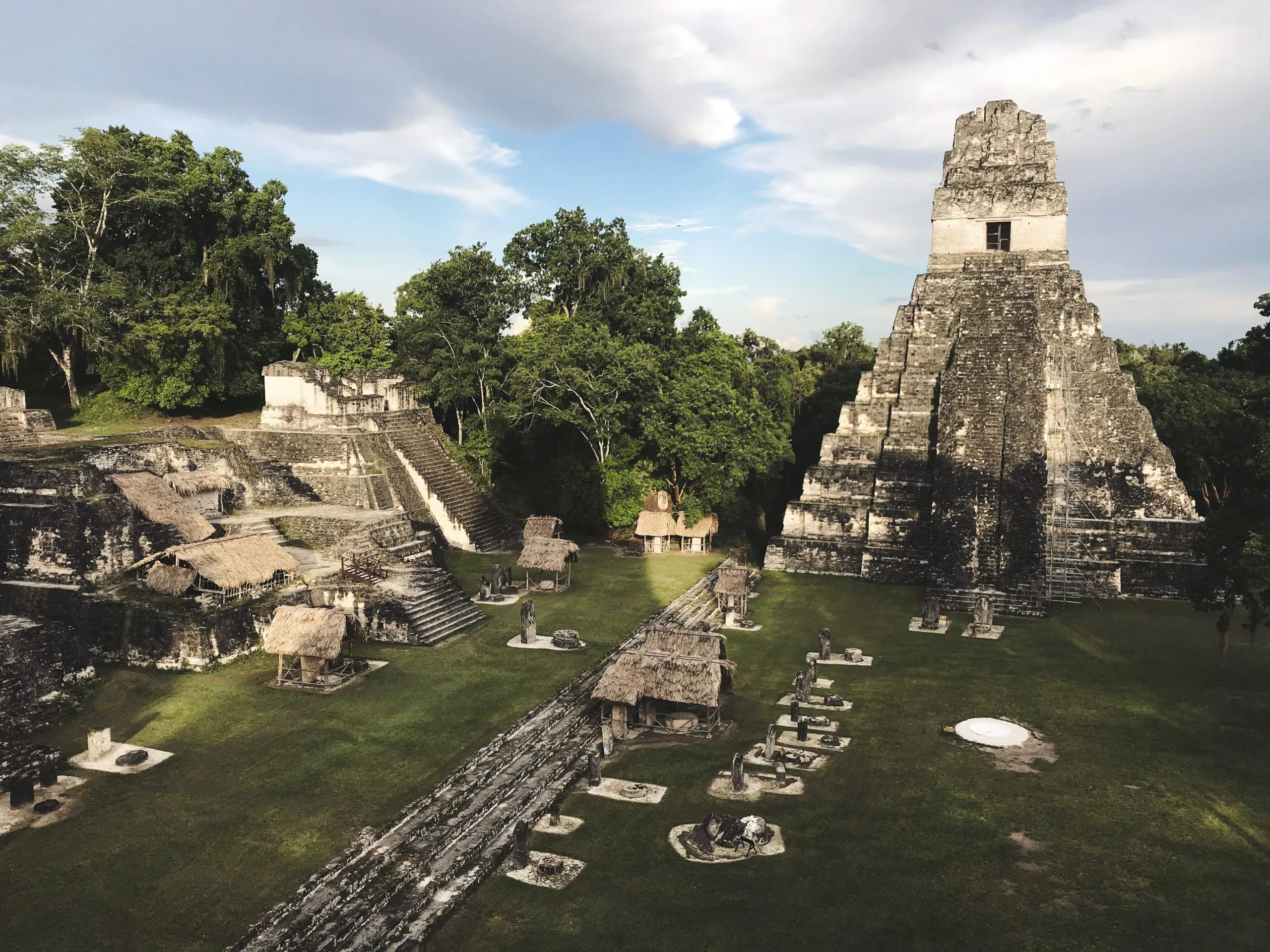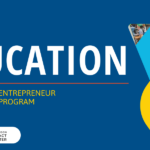While spider and howler monkeys swing from the trees, raccoon-like coatis roam in the grass and flocks of birds fly overhead, I stare into the fire. The scent of herbs, cacao, copal, pine sap and tobacco burning in the flames fills the air. Prayers and offerings are made in Spanish, English and an indigenous language full of clicks, vowels, consonants, and glottal stops that sound ancient and wonderful. Small colored candles melt in the roaring fire as plumes of smoke spiral toward the sky. Welcome to the Mayan fire ceremony.
I’m part of a group of 19 other people in Tikal, Guatemala, a more than 2,000-year-old Mayan city of ruins that lies in a rainforest. It’s the beginning of a new decade and I want to ring in 2020 by doing something adventurous, memorable, and a little magical.
The tour is billed as “Shapeshifting into Higher Consciousness” and over the course of the week, there are walking tours, workshops, consultations, Mayan ceremonies, and sightseeing. From learning the intricacies of building a Mayan fire to participating in rituals and ceremonies that last several hours—most are done in daylight but there is a spectacular one at night under the stars—the trip is a whirlwind of activity, self-reflection, and learning. All along the way, we are encouraged to Touch the Jaguar…
Touching the Jaguar
“Touching the Jaguar” to Mayan and Amazonian Indigenous cultures means to confront the fears, beliefs, and obstacles that are holding us back and to transform them into positive action to change ourselves and consequently, the world around us for the better.
It is also the title of the new book written by one of my favorite writers, economists, and whistleblowers who is also an expert on shamanism and indigenous cultures. He also happens to be leading the tour—John Perkins, who famously authored a book titled The Confessions of an Economic Hit Man.
Leading the group along with Perkins are Tata Domingo and Tata Julio Tot, two Mayan shamans that Perkins has known and worked with for many years, and Ecuadorian expedition guide and environmentalist Daniel Koupermann. Together they make up the team that will take us on the inner and outer journey.
The Life of Perkins
Perkins’s collective work has strongly influenced the conscious business movement but if you are unfamiliar, his remarkable story began when he was a Peace Corps volunteer. He worked with the Shuar people of the Amazon rainforest and the Kichwa of the Andes, experiences which led him to a lifelong connection to indigenous peoples. After the Peace Corps, he got a job with an international consulting firm that did large scale infrastructure projects throughout the developing world. He worked for ten years with the prestigious title of Chief Economist advising the World Bank, United Nations, IMF, U.S. Treasury Department, Fortune 500 corporations, and leaders of countries in Africa, Asia, Latin America, and the Middle East. He also learned firsthand what went on in the dark underbelly of the global economy.
At first, he thought he was living the American dream by having such an important and well-paid job until he realized he was living a nightmare. Many of the projects, business deals and bank loans he helped facilitate in developing countries, while they may have looked good on paper, often led to a never-ending cycle of debt that hit working and poor people the hardest when the loans couldn’t be paid back by their governments. Sometimes, this led to the confiscation of a country’s natural resources—which, he claims, was really the plan all along. This ensured long-term hardship for a large majority of the population as well as political instability.
Hence the reason for writing his best-selling book The Confessions of an Economic Hit Man which he wrote to relieve his guilt and to share his experience with as many people as he could. The book chronicles his professional life as a witness to deep state intrigue, greed, and brutal corporate and government strong-arm tactics that use shady business deals, political coups, and assassinations to achieve their objectives. The book also helps explain the perpetual system that plays a major role in keeping the developing world down. The book is a damning indictment of the way we do business, treat the Earth and treat each other.
After being rejected by 39 book publishers, it was accepted by Berrett-Koehler, and the book went on to be on the New York Times non-fiction bestseller list for 73 weeks, sell more than a million copies and be translated into 32 languages.
Perkins has gone on to write nine other books, help found two non-profits, appear in several documentaries, and lead travel tours through Central and South America centered on connecting with indigenous people and sharing their ancient wisdom with the modern world. He says that if we listen to what they are telling us and if we respect their knowledge and wisdom, they can and will help steer our planetary future in the right direction.
Despite his experiences, Perkins is an upbeat man who remains an optimist. All his books offer concrete doable solutions to the problems we face, which in the end makes his work transformational and inspirational.
“We hold the power to change things, if only we recognize it.”
– John Perkins
Recognizing our own power is one of the main keys to understanding how our perceptions and behavior change and shape our outer world. It’s also a theme found throughout Perkins work and is expanded upon in his 10th book — Touching the Jaguar, to be released June of 2020.
It tells the story of how an Amazonian shaman saved his life and taught him how to change his fears and negative perceptions into positive action, which is something he maintains we can all do. The book explains how his experiences returning to the Amazon and witnessing the harm oil companies were doing to the land and to the indigenous tribes who lived there converted him from an economic hit man to a writer and social, environmental and human rights activist.
Life is but a dream
Seven days have passed in the blink of an eye. On the last day we end the journey with a fire ceremony and purification ritual that together will last for several hours. Dressed in white clothing, we all stand in a circle around the fire. The flames leap and the fire crackles loudly on the shore of the lake. We use our hands to reach toward the sky and then to cover our hearts. Tata Domingo and Tata Julio invoke and honor the energies of creation called nawales, and then the Four Elements, then our ancestors and then our guardian spirits. We sing. We pray. We move around the fire. We throw our candles into the flames as we give thanks, ask forgiveness, and ask for what we need. Sometimes there is laughter and smiling, sometimes there is seriousness and tears. There is a palpable bond among all of us.
Through the fire’s haze I see John Perkins banging a drum as he leads us into singing: “Row, row, row your boat, gently down the stream. Merrily, merrily, merrily, merrily—” he shouts the last line: “LIFE IS BUT A DREAM.”
I silently thank him for the reminder, and I allow myself to dream throughout much of the remaining ceremony. Not in details but in broad brushstrokes. I dream that the business world has finally figured out that putting people and the environment before profits is ultimately the best business model that exists. I dream the movement spreads like wildfire throughout this decade and soon we are living in a new and improved world hitherto not thought possible. Bring It On 2020s. Let the magic begin.
About the writer: Peter Troiano, MBA, is a communications and business consultant, who has worked on impact projects in Asia and the Middle East. A traveler, writer, and weekend warrior surfer, he is passionate about the intersection of consciousness and the business world,





